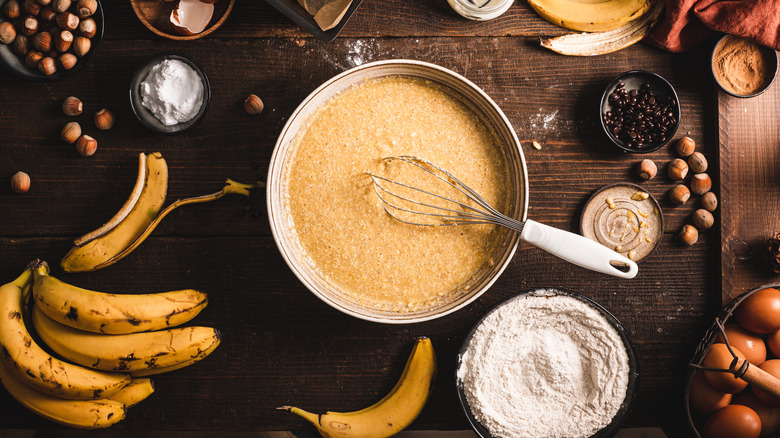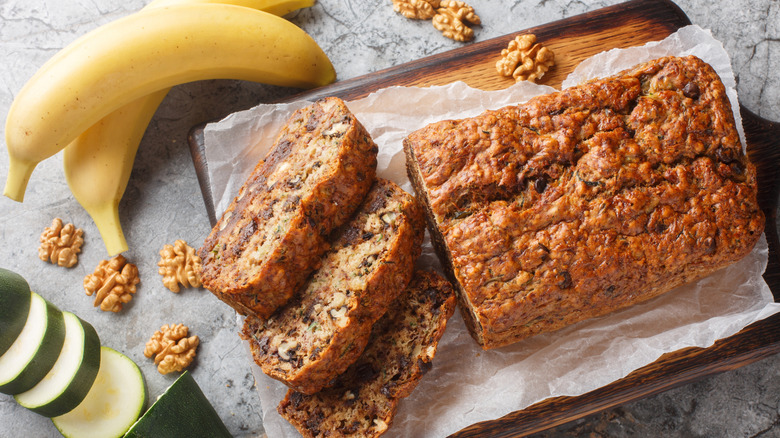Bananas As Butter? Here's When This Fruity Substitute Works Best For Moist, Delicious Bakes
Whether you're putting a fruity spin on latkes or just looking to get more potassium in your diet, bananas are high in moisture and creamy when mashed, making them a prime substitute for butter. For delicious bakes, Laura Kanya, Research & Development Chef at Ann Clark Ltd., says they are a dream ingredient for achieving moist, fluffy results.
"I recommend using banana instead of butter in cakes, quick breads, and muffins," Laura Kanya tells us. "These baked goods have a more dense texture that can stand up to the moisture that banana brings to a recipe." These baked goods have strong gluten networks, giving them a firmer overall structure, so a bit of extra moisture won't drastically alter their textures. Still, you'll want to be careful of how many bananas you add, or you'll end up with an overly dense, gummy confection.
"I do not recommend using bananas as a swap for butter in baked goods that have a short crumb like cookies, crusts, and scones," says Kanya. The textures and structures of these baked goods are highly reliant on proper ratios of flour and moisture. Too much moisture and cookies spread out and harden on the pan, crusts may become tough, and croissant layers won't lift properly. Instead of substituting butter with banana for these recipes, incorporate some ground banana chips for extra flavor with zero additional moisture. Bananas play an interesting role in baking as a substitute for butter and understanding that role is key to making any substitution a success.
Why and how to substitute butter with banana
The key to this trick is to consider the crumb of your baked goods. Keep in mind that bananas naturally have more water, even when strained of their excess liquid, than butter. Using too many bananas is one common mistake that makes banana bread mushy, and this idea applies any time you bake with the fruit.
"Banana can be used as a substitute for butter in some recipes like cakes and quick breads," Kanya says. "Its texture is good for binding recipes, and bringing dry ingredients together into a cohesive batter. However, I recommend also using an oil – like canola or coconut – in addition to banana, as banana does not have any fat." One of the most important rules when it comes to baking is that you must use some sort of fat to limit gluten development, shorten its strands, and ensure your baked goods have plenty of moisture. Combining the binding power of bananas with the gluten-limiting effects of oil all but guarantees moist, fluffy baked goods.
"Fat coats flour which limits gluten development, resulting in a more tender crumb," says Kanya. "I recommend substituting half of the fat with banana, but not eliminating the fat all together." Kanya tells us it's important to always use "a very ripe and mashed banana that has been strained of its liquid" to subtly add a layer of banana flavor to what you bake without sabotaging its texture.


